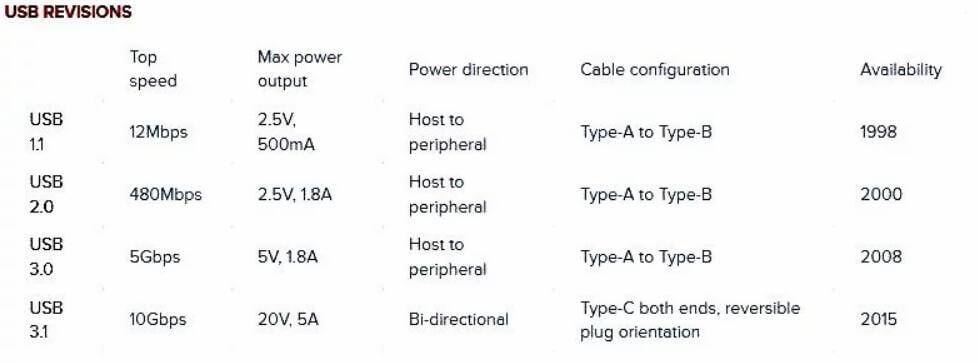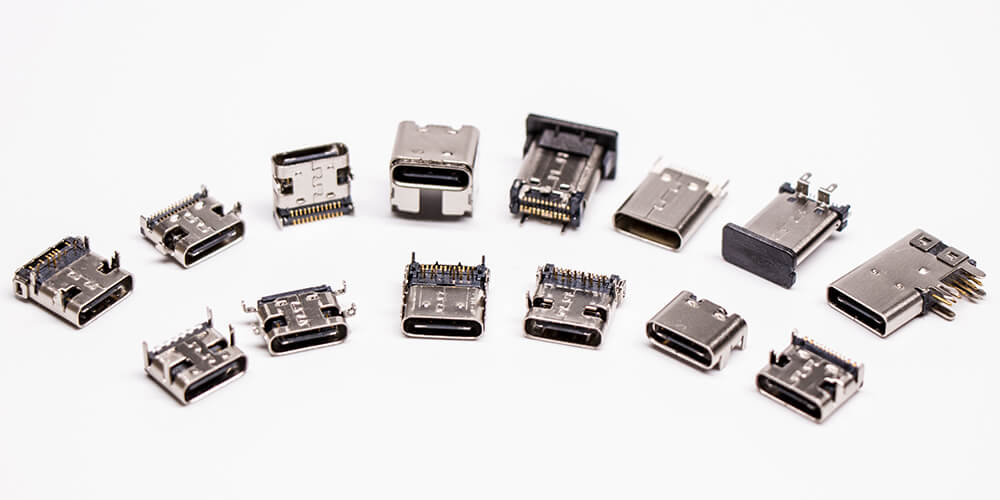同样的USB接口,为什么传输速度不一样?
2019-06-24 1
从最初的 USB 1.0 标准到现在的USB c 型连接器,usb接口在电脑和手机上使用已经有很长一段时间了。 这里我们先来了解一下USB接口的各种标准。
USB 接口标准已经从 USB 1.0 发展到当前的 USB 3.2 标准多代。 目前我们常用的USB 2.0-USB 3.1 Gen2标准接口。 从USB 3.0开始,USB数据接口有了很大的发展。

当USB接口出现在3.0标准时,蓝色的接口很容易和之前的接口分开。 到目前为止,我们计算机上的所有 USB 端口都是 USB3。 0 连接器,尽管 USB 3.0 标准已经发明了十年。
这USB连接器非常混乱(USB连接器指南). 并不是所有蓝色接口的传输速度都是10Gbps,也不是所有的USB Type-C接口都是USB 3.2标准。
USB 3.0标准实施以来,出现了非常混乱的局面。 著名的事件是苹果MacBook发布时,Macbook声称是USB 3.1标准。 但是发现这个接口的速度达不到USB 3.1标准的10Gbps,只有5Gbps。 结果官方标注为USB 3.1 Gen1,本质上就是USB 3.0。
所以消费者没有注意到 USB 3.1 Gen1 和 USB 3.0 之间没有区别。 随后,USB-IF规范中没有了USB 3.0,取而代之的是USB 3.1 Gen1,而USB 3.1 Gen2则是10Gbps的传输速度。
市面上有很多U盘和数据线标示为USB 3.1,但并没有具体说明是Gen1还是Gen2。 那么我们如何区分一个USB3.1是USB 3.0还是USB 3.1 Gen2呢? 主要有两种方法:
1 传输速度,连接时,USB 3.1 Gen2标准的连续读取速度应超过500MB/s;
2价格,目前市面上USB 3.1 Gen1产品实际售价为350元/128GB,如果是Gen2标准,价格翻倍。 例如:当您要将5GB的电影文件传输到移动存储设备时,在USB 3.1 Gen1中,需要10s,如果使用USB 3.1 Gen2,则只需要4.13s。 理论上,USB 3.1 增加了一倍以上。

以前,我们可以根据不同的标准来区分USB连接器。 于是,USB Type-C的出现,彻底让局面更加扑朔迷离。 很多人认为USB Type-C代表的是高速接口。 但实际上USB Type-C只是一个接口,它可以承载多种传输方式,哪怕是可以用来连接USB1.0(传输速度只有192KB/s)的传输协议。
在选择usb type c连接器的时候,我们要知道USB Type-C接口不一定都是雷电3高速接口,尤其是那些用Type-A转Type-C,用Type-C来宣传自己U盘的 磁盘。
电蜂是一家专业的电子元件商店,我们的主要产品包括射频连接器,USB typc-c连接器和天线,来自中国原始 OEM 工厂,质量上乘,价格有竞争力。
如有任何问题,请随时联系我们.
- 文章标题:同样的USB接口,为什么传输速度不一样?
- 文章地址:https://www.elecbee.com/zh-365-The-same-USB-interface-why-is-the-transmission-speed-different
- 文章分类: 行业新闻 USB连接器
- 阅读次数:3,669






